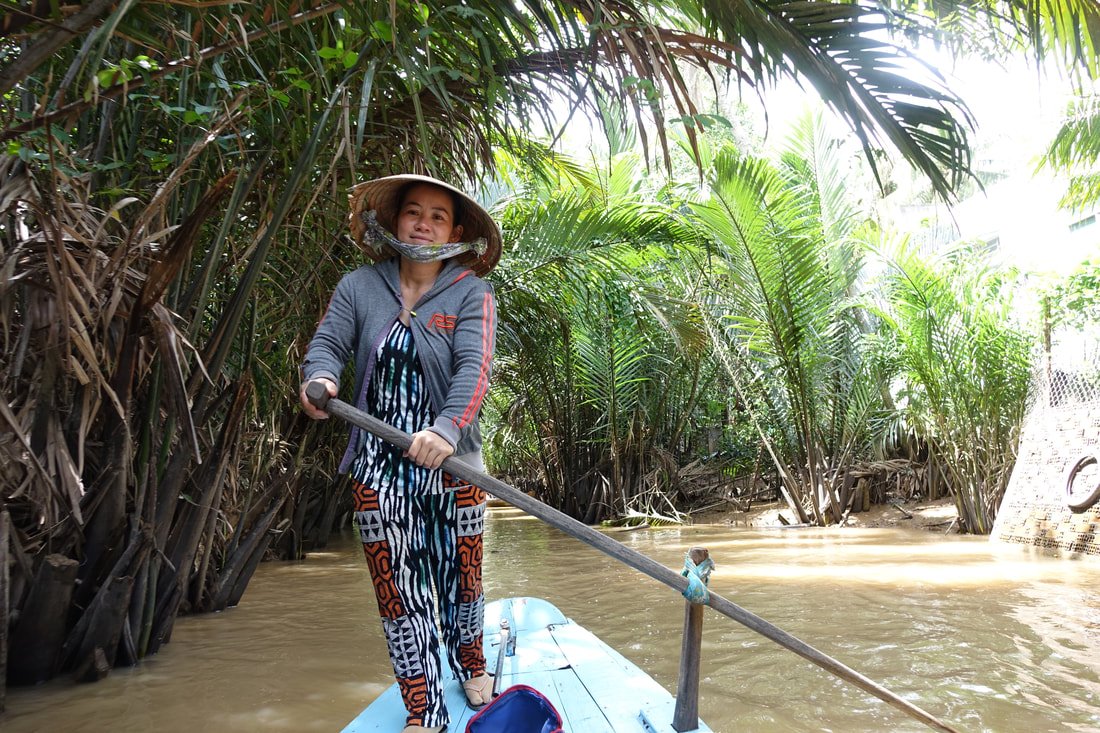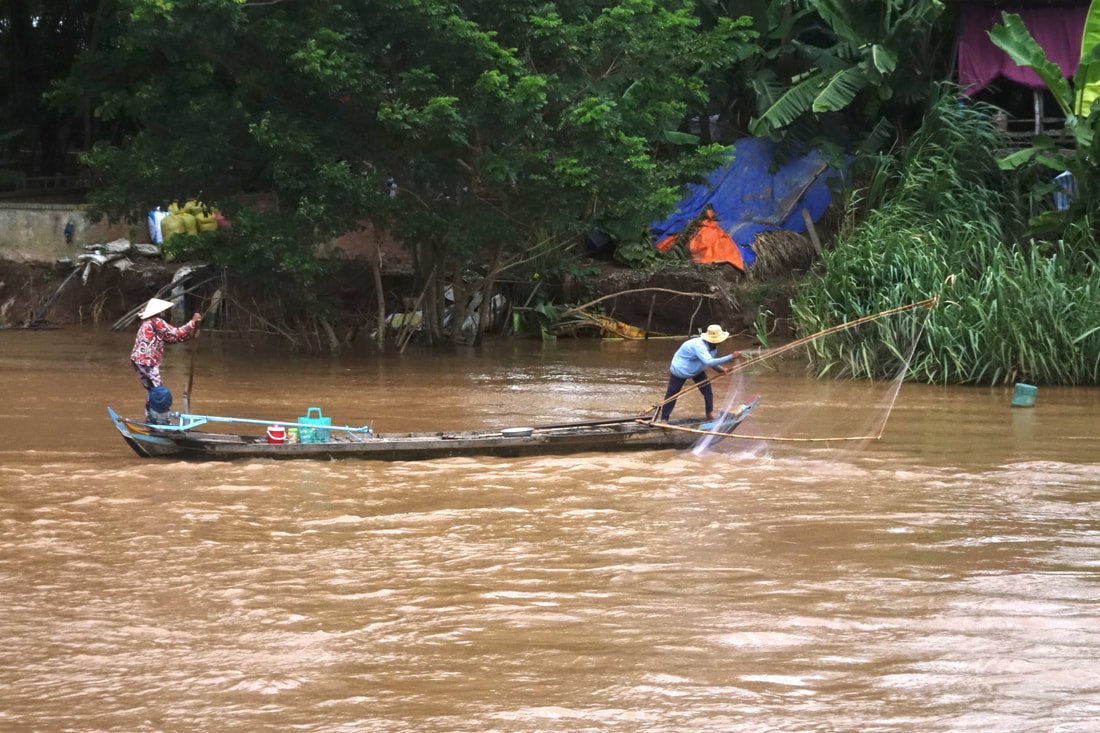6 Best Things to Know About Vietnam Before You Go
Vietnam is a far off and exotic place.
Some Americans might even consider the destination too mysterious and daunting to put on their travel wish list. And those of a certain age also are still haunted by images and experiences surrounding the war that concluded there just over four decades ago.
Let's demystify Vietnam, shall we? It's an incredibly affordable and scenic spot that you should definitely try to visit. Here are six things to know before you travel to Vietnam.
1. How Long Will It Take to Fly There?
First you have to get there, and Vietnam is halfway around the world. We took a pair of flights to join a cruise with Avalon Waterways, and the total travel time, routed through China, was more than 23 hours. The longest flight was 15 hours. So, you have to make sure you are prepared for that trip and know that being in a tiny airplane seat for that long can take a toll.
I am 6-foot-4 and don't sleep well on planes, so I just knew I was going to have to suck it up and be ready for a bit of jet lag the first couple nights in Southeast Asia. All this said, it in no way should put you off from the trip. Of course, you're going. You just need to know a bit of the logistics. Also worth noting: You'll be 11 hours ahead of the time back home if you live on the East Coast in the U.S.
2. The Food Is Spectacular
This is the good stuff. Whether it's street food, at restaurants or on your cruise ship, you're going to want to savor Vietnamese culture through its delightful, sometimes scary, cuisine.
At restaurants, you'll want to try the pho and other highly slurpable noodle dishes, good for breakfast or any other meal. You'll also find many meals featuring chicken, pork, fish, sticky rice or fried pancakes and steamed pork buns. You can find delicious pho on the street, served from carts or even the smallest milk crate diner on a random corner.
Out on the street curbs or at night markets is also where you might be tempted to try the more adventurous bits like fried insects (scorpions, crickets, tarantulas), grilled snake or frog and all kinds of exotic fruits. Can't stomach those picks? Grab a sure-to-please banh mi sandwich — it's the humble French baguette loaded up with meats, pickled veggies, cheese and chili sauce or mayo or margarine. Look to book a food tour that gives you a nice sampling of foods and takes you to different parts of the city. Drink bottled water only (brush teeth with it, too) and avoid salads and vegetables and other foods that aren't fully cooked — you could end up with "traveler's tummy."
3. The Mekong Delta Is the Heart of the Country
The Mekong River is a crucial source of commerce and agriculture for the entire country. The Mekong Delta in Southern Vietnam covers 16,000 square miles and is the nation's heart and soul. Don't miss visiting this region of the country.
Travel to the villages along the river to see how people live and work in rural areas. We loved stops at family businesses to see businesses focused on weaving scarfs and making sampan boats.
People live on the river in houseboats that relocate as water levels change during the rainy and non-rainy seasons. You'll see floating markets and schoolhouses and churches. Fishermen expertly maneuver sampan boats in the river and canals casting nets while somehow balancing on the tip of the narrow vessels. Children swim at the river banks, and the sunrises and sunsets inspire awe. Just sailing along the river as we did with Avalon Waterways offers classic scenes that are typical Vietnam: views of rice paddies, pagodas and small boats phut-phut-phutting past bringing fish or veggies to market.
4. Check Out The Museums and War Sites
You can't go to Vietnam without almost instantly thinking of the war. They call it the American War. You will hear an interpretation of the events before, during and since the horrible fighting that probably will be starkly different from what you learned about as an American studying or reading about it. Our tours included several war-related aspects. In a rural village along the river, our guide brought us to a home of a former Viet Cong soldier. Some in our group filled with Americans, Canadians and New Zealanders toured his home and posed for pictures with him. He offered visitors a chance to put on his uniform, too.
Many others respectfully listened as our guide translated during a short question-and-answer session with the former soldier. This type of exchange will evoke different responses from people depending on their personal feelings or experiences with the war as it relates to their family or people they know who might have fought against soldiers such as members of the North Vietnamese Army or Viet Cong.
So, you have to consider how you will feel and how you want to take part in such interactions on a trip to Vietnam. The War Remnants Museum in Ho Chi Minh City and the Cu Chi Tunnels (the Viet Cong tunnel system just outside the city) also are extremely interesting sites highlighting the history, photography, reports and relics or the war. But visiting these sites also requires a bit of reflection as a Westerner. We found them important places to gain further knowledge of a most complicated time in history.
5. A Bit About Getting Around
We found the people in Vietnam to be extremely friendly — and the workers in hotels and restaurants in Ho Chi Minh City were the most attentive and offered the best service that we've ever encountered. Taxis are available, but make sure to use Vinasun, which is a reputable service. We were warned that others can be sketchy. Uber offers a service with drivers on scooters, so you can hop on the back of the motorbike. Grab is another scooter service.
Crossing streets in the cities, especially Ho Chi Minh City, is a unique challenge. Few roads have traffic lights or stops signs, and while there are cross walks (zebra stripes), drivers will not stop for pedestrians — ever! It's a leap of faith to step off that curb. Do it like a local, with confidence. Walk with a steady pace, wave your hand to become more visible, do NOT run. Drivers will flow around you. It's really quite amazing. We were there for a week and never saw any traffic incidents. Markets are a huge part of life in Vietnam. Go ahead and bargain. The idea is to get about half off the original posted or quoted price on an item.
6. Do I Need a Visa to Travel to Vietnam? Yes, You Do.
You need a visa to visit Vietnam. Make sure you get your forms in order in plenty of time, because the immigration agents in the country take this seriously. We were able to get ours online for a reasonable price. Make sure to print off multiple paper copies of your visa, which will require you to also submit a passport-style photo with your application. Travel with the paper copies (you might be asked to present the visa upon leaving the country as well. Currency is the dong, and about 20,000 dong = $1. Many tourist areas accept dollars, too, but you won't get the best exchange rate when dealing in U.S. dollars (they round in their favor), and you will probably get change in dong.
I hope this helps you prepare for the big trip. Have fun!
Thanks for reading,
JR


